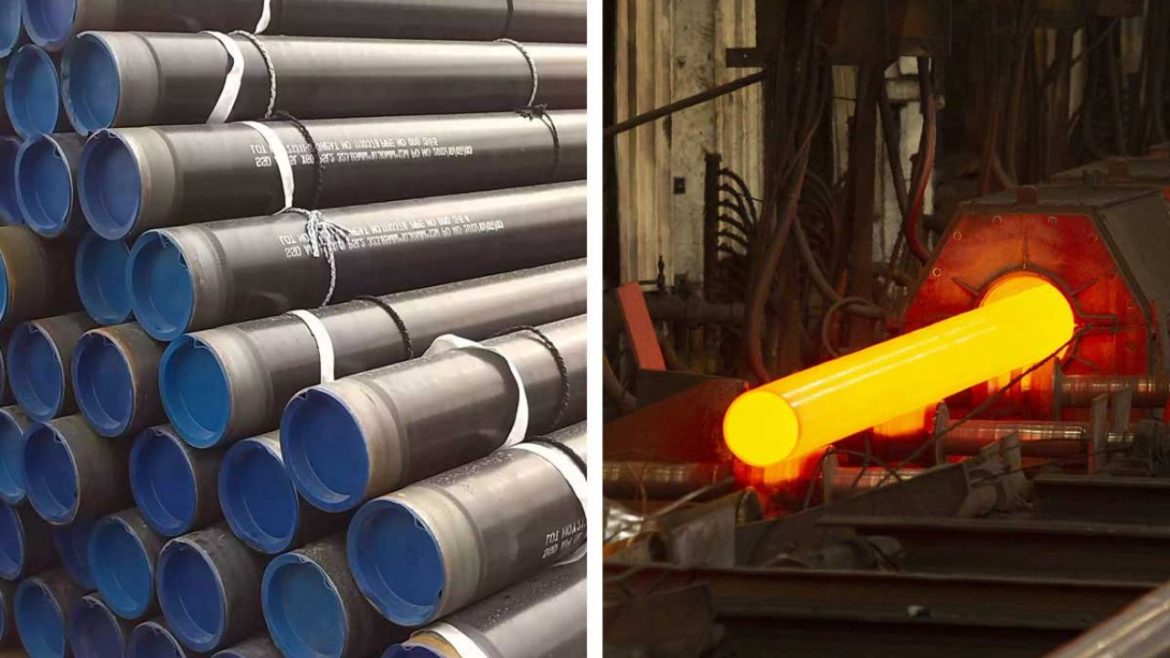These carbon steel pipes are recycled for low-temperature facilities and more essentially a carbon steel material. Standard in oil and natural gas, these pipes offer high tensile strength and toughness for the transportation of fluids in sub-Arctic environments. This paper focuses on various heat treatment and processing techniques that are necessary to enhance the performance of ASTM A333 steel pipes.
Impacts on Low-Temperature Performance
The Tuspipe’s pipes are used for low-temperature pipes containing carbon, manganese, silicon, phosphorus, sulfur, and other alloying elements. These mechanisms make it possible for the pipe to avoid hard breakages that are individual of low temperatures. It is also required that the right heat treatment progressions can raise the strength and hardness of these pipes for industries that require the best performance in sub-zero conditions.
Process Heat Treatment of ASTM A333 Steel Pipes
ASTM A333 Tuspipe’s steel pipes of its production require the most necessary process – heat treatment. It improves the mechanical properties of strength, ductility, and impact resistance properties needed for low-temperature service. Since these pipes are laid in regions where temperatures are low, heat treatment becomes inevitable to ensure that the pipes do not fail and to ensure that they perform their intended function.
Enhancing Structural Integration
The process of normalizing involves heating of ASTM A333 steel pipe to a temperature above its critical temperature and then cooling it through the air. This technique enhances the structural homogeneity and also restrains the grain size; it has subsequent effects on mechanical points such as toughness and tensile strength. The normalized steel pipe is more stable and durable and it has high resistance to brittle fractures, this is important in ascertaining its integrity, especially at low temperatures.
Quenching and Tempering
Quenching and tempering is a two-stage heat treatment process that is used in ASTM A333 Tuspipe’s pipes to obtain the best balance of consort and ductility. First, quenching is the process of heat-treated steel pipe cooling at a very high rate through the immersion of a selected cooling medium like water or oil. This process makes the material hard but then it becomes more fragile. The third step which is tempering sees the steel pipe being heated to another lower temperature before cooling it; this reduces the test but also dampens the high strength that comes with quenching.
Minimizing and Coping with Internal Pressure
There are also other heat treatments for these steel pipes including annealing which involves heating the steel to an essential temperature and then letting it cool in the furnace. It also increases the flexibility of the material and reduces the inner stress that is formed by other manufacturing processes. For pipes that need further machining or shaping, the most useful type of heat treatment is annealing because it also makes pipe handling easier and free from sudden cracking or deformation.
Stress Relieving
In this case, stress relieving is carried out on ASTM A333 pipes to remove intra-granular stress that may have been generated at the time of fabrication for instance welding or machining. Steel pipe is heated to a condition below this critical point and then allowed to cool off at a very slow rate. Stress relieving reduces the susceptibility of the component when in use by making it more dimensionally stable so that it will not crack or shrink. This technique is especially useful for low-temperature applications because it increases the material’s ability to absorb shock and maintain its structural integrity under thermal loads.
Shot Peening
This is not a heat treatment process but it is a surface handling process recycled to enhance the tiredness strength of ASTM A333 steel pipes. A media of small metallic pellets is predictable on the surface of the steel pipe to produce compressive residual stress. It also improves the surface hardness and in the process minimizes the possibility of pipe cracking from outside pressure. Shot peening is most useful on pipes that are exposed to harsh operating conditions because it extends their useful life.
Applications of Heat Treated ASTM A333 Steel Pipes
The Tuspipe’s steel pipes are supplied in heat-treated conditions for use in oil and gas, petrochemicals, and power generation. The Tuspipe’s pipes are ideal for use in situations where they will deliver gasses or fluids at low temperatures and the pipes need to be strong and hard in their make. Heat treatment also assists in retaining the pipe’s capacity to handle thermal and pressure stresses, or shock or loads from the environment.
Conclusion
Low-temperature services are expected to be operated by ASTM A333 Tuspipe’s steel pipes and hence, it becomes very relevant that the pipes undergo appropriate heat treatments. Other manufacturing processes include normalizing, quenching and tempering, annealing, stress relieving, and shot peening which in one way or the other enhances the mechanical properties of the pipe. Through these processes, manufacturers can achieve production of the ASTM A333 Tuspipe that can meet the required performance in the industries.
